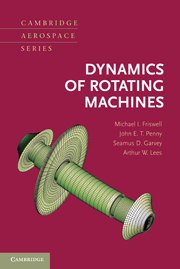Refine search
Actions for selected content:
5487 results in Thermal-fluids engineering
2 - Computers, Codes, and Engineering
-
- Book:
- Applied Computational Aerodynamics
- Published online:
- 28 May 2018
- Print publication:
- 27 April 2015, pp 45-92
-
- Chapter
- Export citation
5 - Classical Linear Theory Computational Aerodynamics
-
- Book:
- Applied Computational Aerodynamics
- Published online:
- 28 May 2018
- Print publication:
- 27 April 2015, pp 264-349
-
- Chapter
- Export citation
Acknowledgments
-
- Book:
- Applied Computational Aerodynamics
- Published online:
- 28 May 2018
- Print publication:
- 27 April 2015, pp xix-xxii
-
- Chapter
- Export citation
Contents
-
- Book:
- Applied Computational Aerodynamics
- Published online:
- 28 May 2018
- Print publication:
- 27 April 2015, pp v-xiv
-
- Chapter
- Export citation
Glossary
-
- Book:
- Applied Computational Aerodynamics
- Published online:
- 28 May 2018
- Print publication:
- 27 April 2015, pp 823-832
-
- Chapter
- Export citation
8 - Viscosity and Turbulence Modeling
-
- Book:
- Applied Computational Aerodynamics
- Published online:
- 28 May 2018
- Print publication:
- 27 April 2015, pp 539-616
-
- Chapter
- Export citation
Frontmatter
-
- Book:
- Applied Computational Aerodynamics
- Published online:
- 28 May 2018
- Print publication:
- 27 April 2015, pp i-iv
-
- Chapter
- Export citation
1 - Introduction to Computational Aerodynamics
-
- Book:
- Applied Computational Aerodynamics
- Published online:
- 28 May 2018
- Print publication:
- 27 April 2015, pp 1-44
-
- Chapter
- Export citation
3 - Getting Ready for Computational Aerodynamics
-
- Book:
- Applied Computational Aerodynamics
- Published online:
- 28 May 2018
- Print publication:
- 27 April 2015, pp 93-160
-
- Chapter
- Export citation
Appendix B - Sources of Experimental Data for Code Validation
-
- Book:
- Applied Computational Aerodynamics
- Published online:
- 28 May 2018
- Print publication:
- 27 April 2015, pp 766-775
-
- Chapter
- Export citation
Appendix A - Geometry for Aerodynamicists
-
- Book:
- Applied Computational Aerodynamics
- Published online:
- 28 May 2018
- Print publication:
- 27 April 2015, pp 731-765
-
- Chapter
- Export citation
List of Abbreviations
-
- Book:
- Applied Computational Aerodynamics
- Published online:
- 28 May 2018
- Print publication:
- 27 April 2015, pp xxiii-xxvi
-
- Chapter
- Export citation
9 - Flow Visualization: The Art of Computational Aerodynamics
-
- Book:
- Applied Computational Aerodynamics
- Published online:
- 28 May 2018
- Print publication:
- 27 April 2015, pp 617-661
-
- Chapter
- Export citation
Preface
-
- Book:
- Applied Computational Aerodynamics
- Published online:
- 28 May 2018
- Print publication:
- 27 April 2015, pp xv-xviii
-
- Chapter
- Export citation
4 - Getting Ready for Computational Aerodynamics: Aerodynamic Concepts
-
- Book:
- Applied Computational Aerodynamics
- Published online:
- 28 May 2018
- Print publication:
- 27 April 2015, pp 161-263
-
- Chapter
- Export citation
Appendix D - Computational Aerodynamics Programs
-
- Book:
- Applied Computational Aerodynamics
- Published online:
- 28 May 2018
- Print publication:
- 27 April 2015, pp 790-801
-
- Chapter
- Export citation
10 - Applications of Computational Aerodynamics
-
- Book:
- Applied Computational Aerodynamics
- Published online:
- 28 May 2018
- Print publication:
- 27 April 2015, pp 662-730
-
- Chapter
- Export citation
Appendix E - Structured Grid Transformations
-
- Book:
- Applied Computational Aerodynamics
- Published online:
- 28 May 2018
- Print publication:
- 27 April 2015, pp 802-807
-
- Chapter
- Export citation
Appendix F - Commonly Used Turbulence Models
-
- Book:
- Applied Computational Aerodynamics
- Published online:
- 28 May 2018
- Print publication:
- 27 April 2015, pp 808-822
-
- Chapter
- Export citation

Dynamics of Rotating Machines
-
- Published online:
- 05 February 2015
- Print publication:
- 31 March 2010
